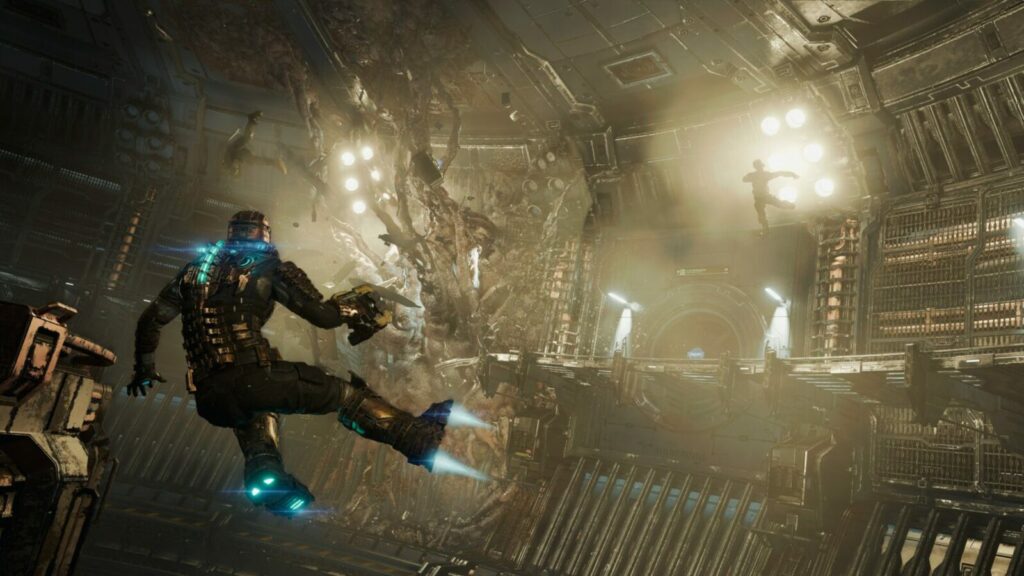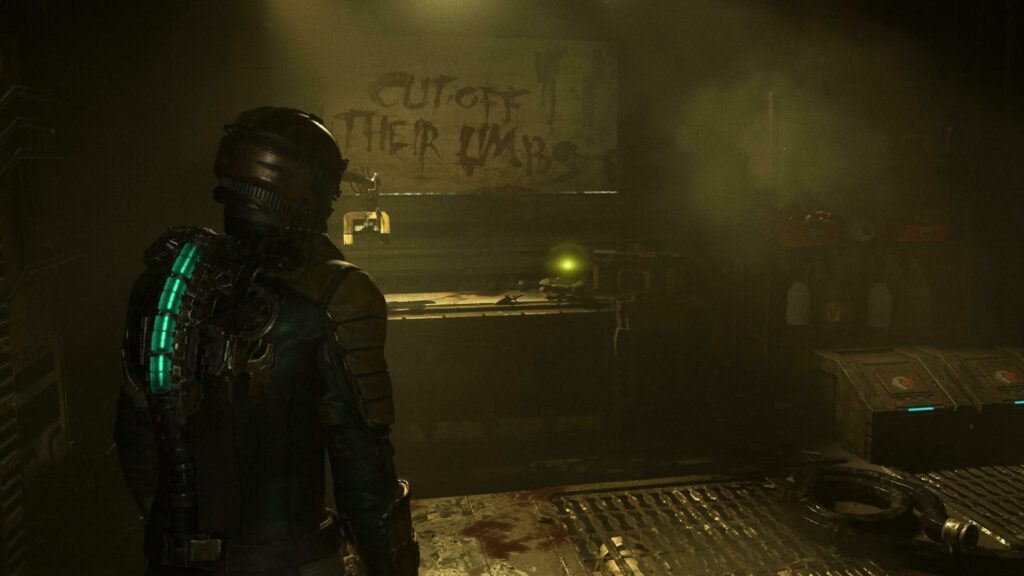Halfway through John Carpenter’s The Thing, the survivors up to that point think they finally cornered the horrific creature that’s been taking over the crew and killing them over the course of the movie. However, in the corner of the frame, the alien’s taken over its latest victim’s head and is slowly and silently trying to get away when it’s noticed by one of them, who goes something in the line of “oh, you’ve got to be shitting me”, unloading their flamethrower and destroying it as it screams in agony.
A similar feeling was definitely there the first time we played the original Dead Space back in 2008. As the hapless space engineer Isaac Clarke, skulking around a derelict space station overrun with horrific mutants, it was a tense game full of jump scares unlike any other up to that point in time. Over its sequels, we got to experience more instances of the same concept in different locations, but none really hit the same wavelength in dread and horror quite like the first entry in the series.
A product of Electronic Arts’ effort at creating new franchises that spawned this as well as equally unique Mirror’s Edge, the Dead Space franchise has remained dormant for over a decade. Its development house, Visceral Games, shuttered months after the release of Dead Space 3, and its staff scattered around the videogame industry. Lead creator Glen Schofeld went on to start his own studio and eventually make The Callisto Protocol, trying as hard as he could to capture the magic that made Dead Space special, and ultimately failing at it, with a game that was at most, just really really gross.

Eventually the task of reviving Dead Space fell to Canadian EA-owned studio Motive, who in 2021 announced that it would be bringing back the original game in remade form. And now, having played a very decent chunk of it, I can safely say they pretty much succeeded. This new version of Dead Space stands to replace the original, thanks to some incredibly well implemented additions and a beautifully new coat of presentational paint. It’s an amazing achievement that might not exactly raise the bar in innovation, but in terms of being both faithful and an improvement over the 2008 version, it’s got plenty going for it.
It’s been long enough since the original’s release for people who have played it back then to have enough of a memory of the overall narrative of that game, but specifically. In my case, having only played that one to completion when it was new and only booting it up for a couple of minutes now before the new game’s release, jumping into the remake has been an experience. EA Motive has basically made a version of Dead Space that everyone probably remembers playing in their minds, with all the modern bells and whistles that weren’t in its first iteration.
For starters, the USS Ishimura eventually becomes a fully explorable location the further you get in the game. Before, certain sections of it would become locked off the closer to the end you got, now you can freely take its tram back and forth through all of the ship’s sections at any time, as long as you’ve gotten to unlock its stations throughout the Ishimura. And there’s plenty of reason to go back and forth, as new collectibles become available as you upgrade Isaac’s security clearance, which give you access to previously locked doors and lockers.
The other are the monsters, which in Dead Space‘s world are called necromorphs. Put together by an enigmatic evil force in the form of The Marker, a relic found off-world and snuck on board by a cult-like religious group called the Unitologists, dead bodies are brought back to life and stitched into horrific creatures. They can only be killed through dismemberment, which is put to absolutely incredible use through combat.

The big thing this time in the remake is that no two encounters are the same due to the implementation of a new system that throws random attacks every so often to keep you on your toes. Meaning that even when exploring previously cleared sections of the Ishimura, you might get jumped at yet again, leading to a constant sense of dread as you step around, usually in the dark, as Isaac.
Speaking of Isaac, you might think he was nimble back in the 2008 version of the game, but he wasn’t. And he still isn’t now. The weight of his engineer armor translates to his movement, giving him momentum and heft that makes him slower than your usual third-person action game protagonist, but also helps to put power behind every one of his attacks. And well, there’s the stomp, which is still as rewarding to pull off as it’s always been in every one of these games.
Still on the subject of our hero, he’s much more fleshed out this time around. Isaac was a silent and faceless protagonist in the first iteration of the game who followed orders and didn’t have a personality until later sequels gave him a voice and persona through actor Gunner Wright’s performance. Now, Wright’s back as both the talent behind his performance and look, and has plenty of input to give all throughout the game, along with the rest of the cast who themselves have gotten rewritten and with it, much more depth.
Aside from the story progression that expands over 12 chapters much like the original’s, there are side quests to tackle that have you explore the Ishimura further in order to expand plot threads like Clarke’s girlfriend Nicole’s work aboard the doomed ship, something that was left to everyone’s imagination the first time around. These are multi-part affairs that unfold throughout the main story and serve as means to giving more weight to a story that is otherwise very close to the original’s script.

Isaac’s arsenal has also gotten an upgrade. Weapons can now be fiddled with in the game’s numerous stations and given special status effects by spending the few nodes you find during your adventure. My bread and butter combo of the plasma cutter and ripper have gotten some of the more interesting additions out of the bunch, the former applying burns to enemies and the former a ricochet effect that rivals firefights in old western movies, both of which doing a very decent job at tearing through the opposition.
As mentioned before, the Dead Space remake looks astonishingly good. Character models are the highlight, not to say that the environments are worse off for wear in any way, shape or form. The Ishimura has been faithfully recreated and set with current lighting technology that helps give it a very atmospheric vibe in a way that would’ve been impossible back in 2008.
One section in particular that’s worth mentioning is Isaac’s visit to the ship’s morgue in the very early game in search for the corpse of Ishimura’s captain. Now, through volumetric lighting and fog, that location provides an eerie, creepy aesthetic that has to be seen to be believed.

In fact, the entire ship is a character in itself, as it develops a not to be trusted environment that is in constant flux during your exploration of it. Sections are blown off regularly, revealing the silence of space outside as oxygen quickly becomes a commodity for Isaac, as well as the lack of gravity, forcing you to run to the next pressurized section or wait until the emergency shutters kick in.
EA Motive’s work in bringing back Dead Space is to be lauded. But it’s not only a matter of simply taking the original game and giving it a makeover. What they’ve done here is making Dead Space feel like the thing you played back then by being faithful enough to the original, and then tweaking it and modernizing it in order to make it modern in the best and most thoughtful of ways.
On the other hand, the impact of a new Dead Space might not be as grand as it was back when it was new. Since then there have been countless games that took it as an inspiration – some even copying it wholeheartedly – but this remake is without a doubt a step in the right direction. It works in bringing back the series for an entirely new audience, or for returning fans looking for yet another reason to get spooked. It’s a new version of Dead Space that could just as well be considered the definitive one.





